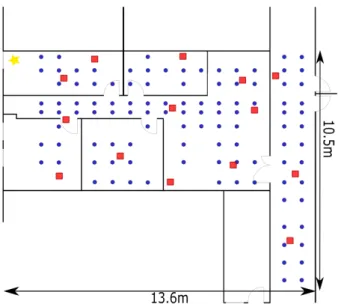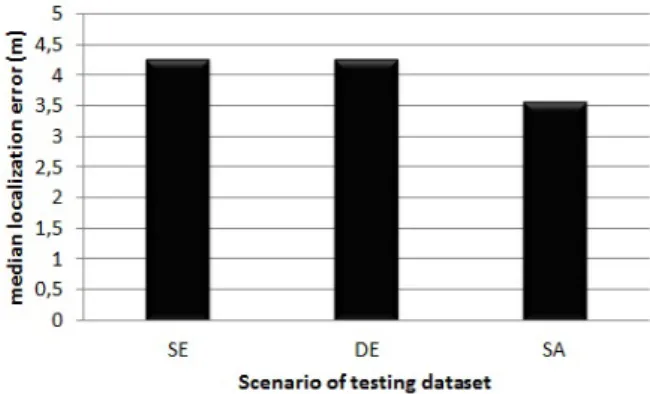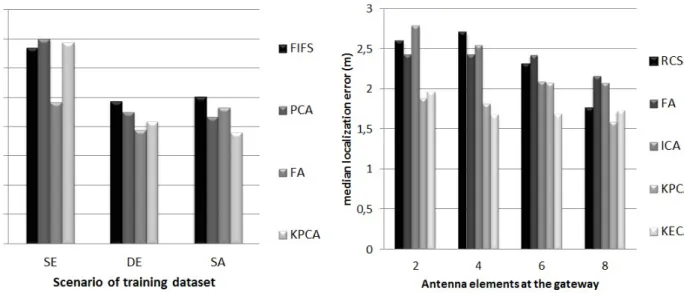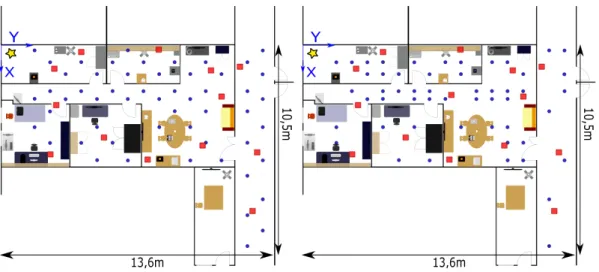An Evaluation Method of Channel State Information Fingerprinting for Single Gateway Indoor Localization
Texte intégral
Figure




Documents relatifs
A signal attenuation ranging model based on RSSI and CSI is established by using the attenuation factor propagation model, and the measured values of RSSI and CSI are converted
In the online phase, when getting a RSSI measurement with an unknown location at an unknown floor, we use a complete parallel network to determine the floor and then to estimate
The recently proposed Smart Probabilistic FingerPrinting (P-FP) algorithm reduces the computational complexity of the traditional FP approach without any accuracy detriment. On
In Phase I, a sequence of power levels which is known to all the transmitters is transmitted (similar to a training sequence in classical channel estimation but in the power
3.2 Applying Conformal Prediction into Fingerprinting method Giving a training database B mapping physical location co-ordinate to correct Bluetooth signal pattern, and a
Human indoor localization is usually performed using Pyroelectric Infra- Red PIR sensors network, however, the latter presents several limitations, and to cope
These techniques work in the UBBE framework and the feasible domains for the location estimates are ob- tained using guaranteed solving methods based on interval analysis [9]
This proposed approach is tested on a simulated environment, using a real propagation model based on measurements, and compared with the classi- cal matrix completion approach, based

